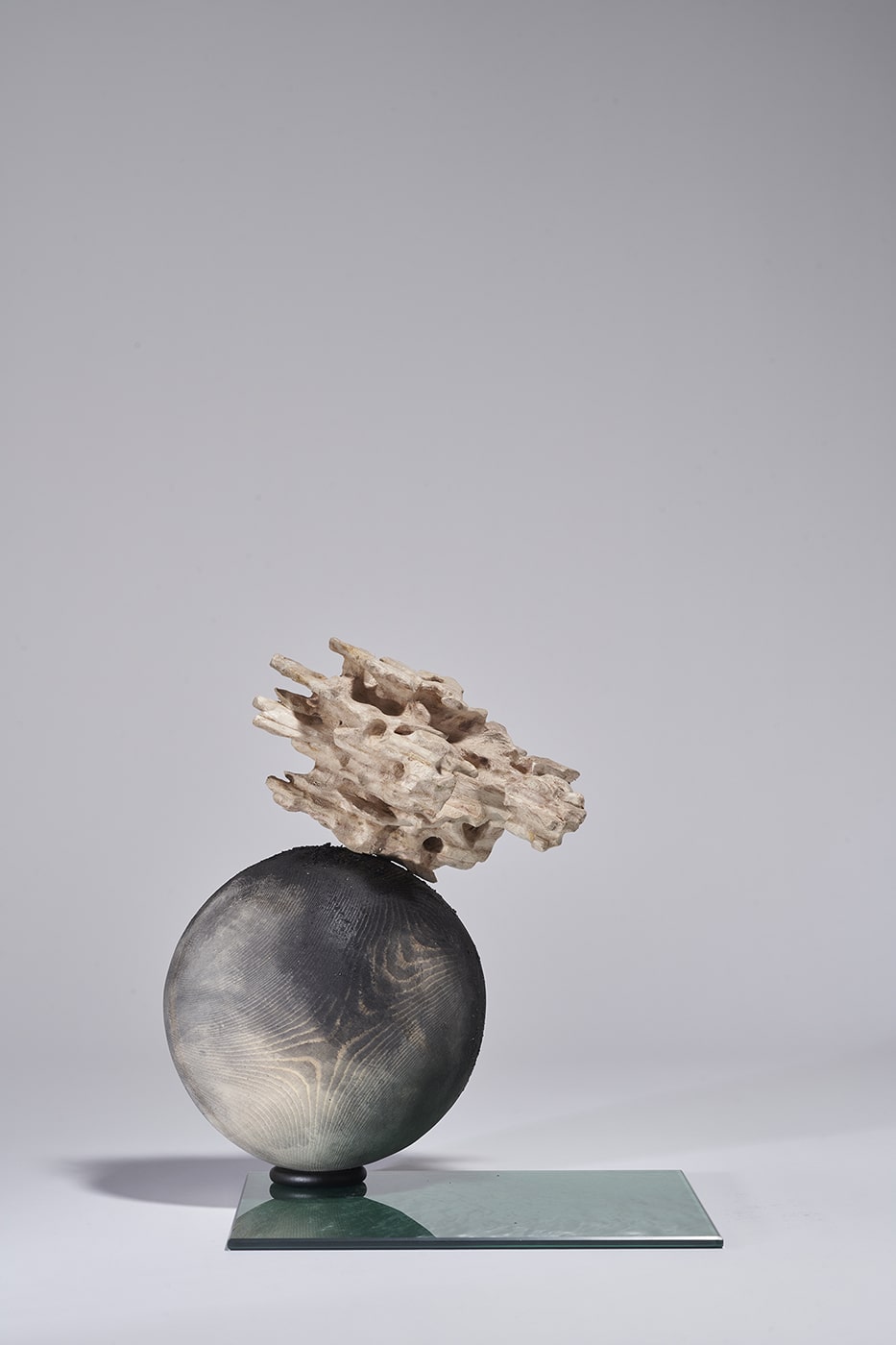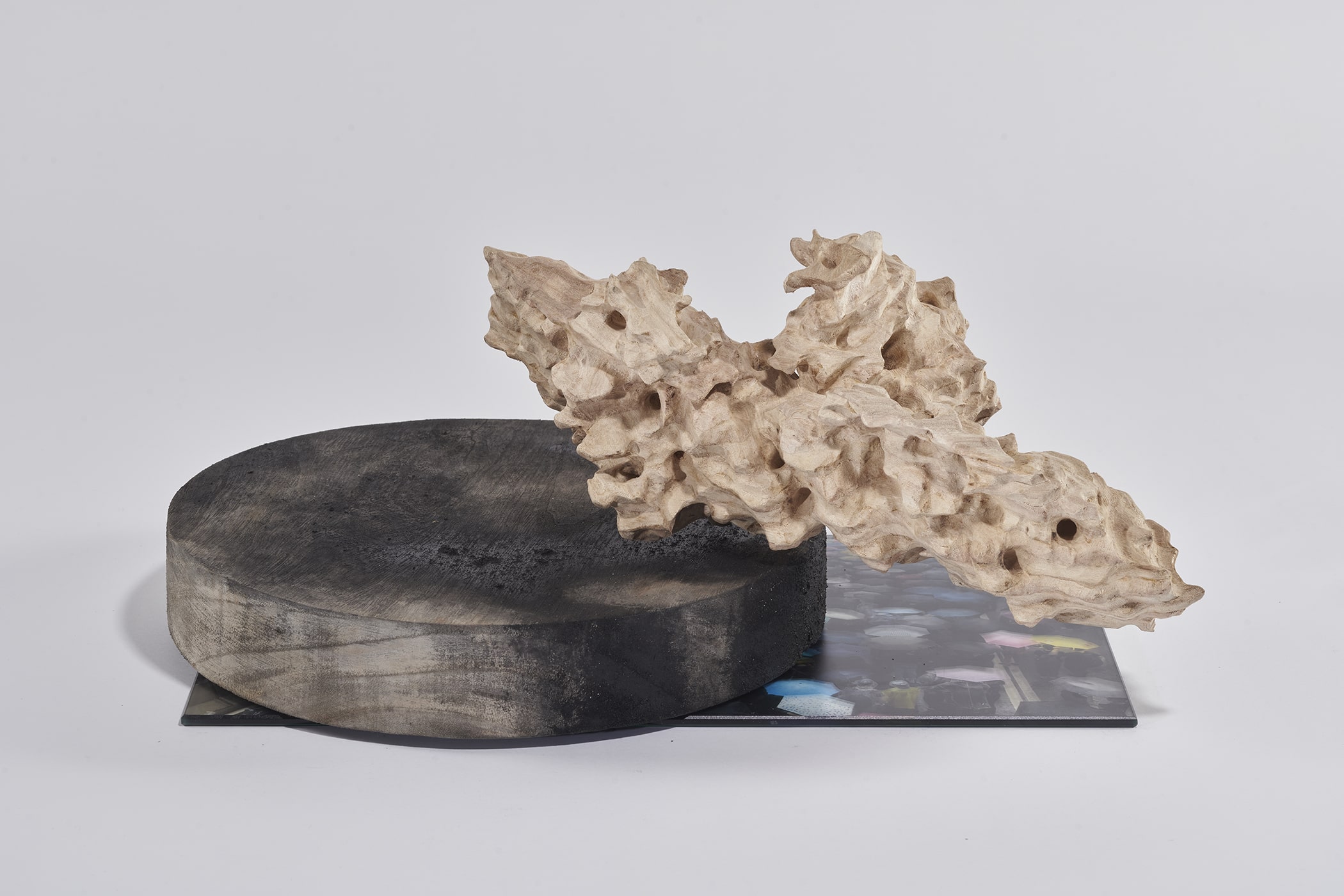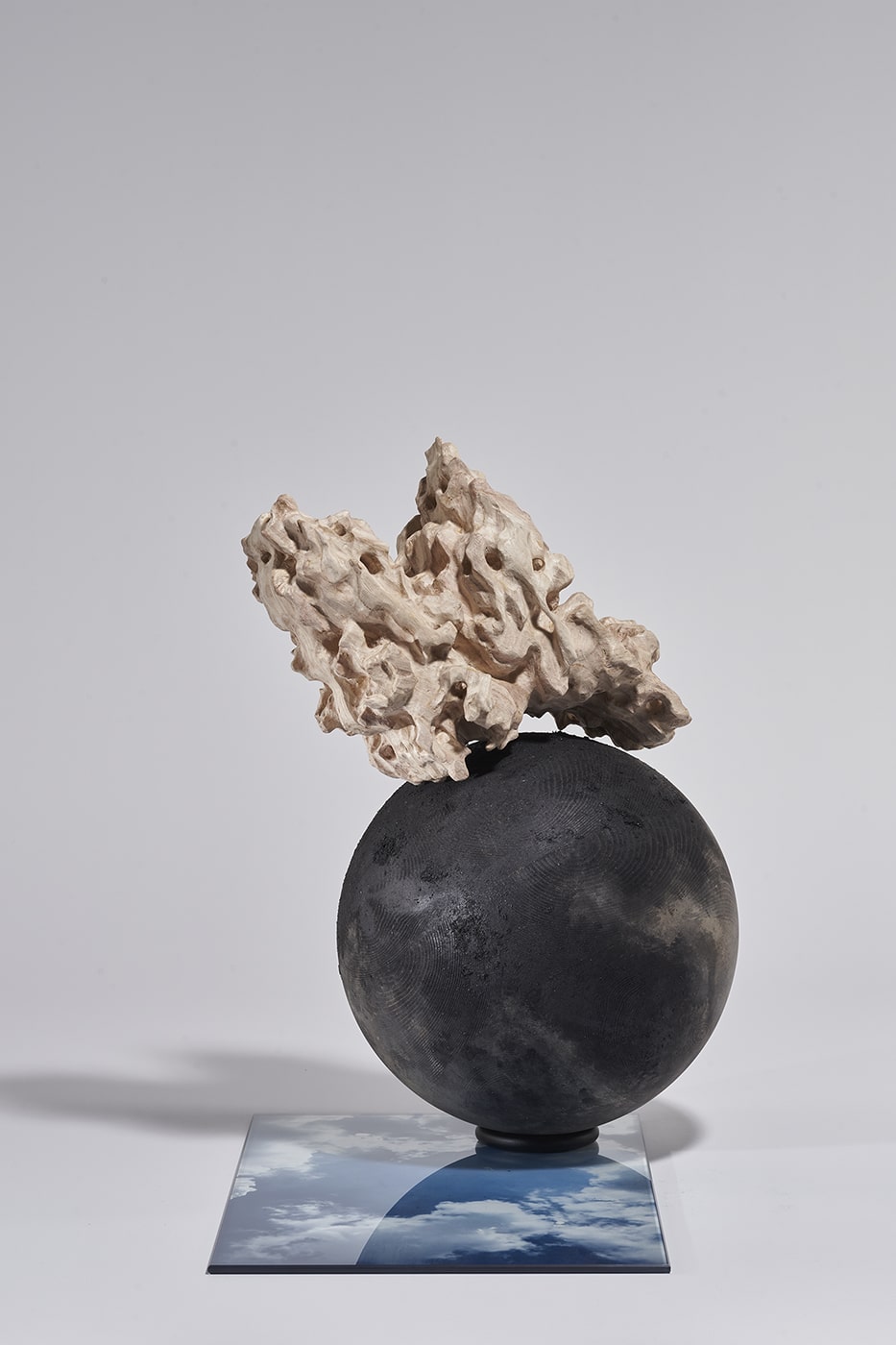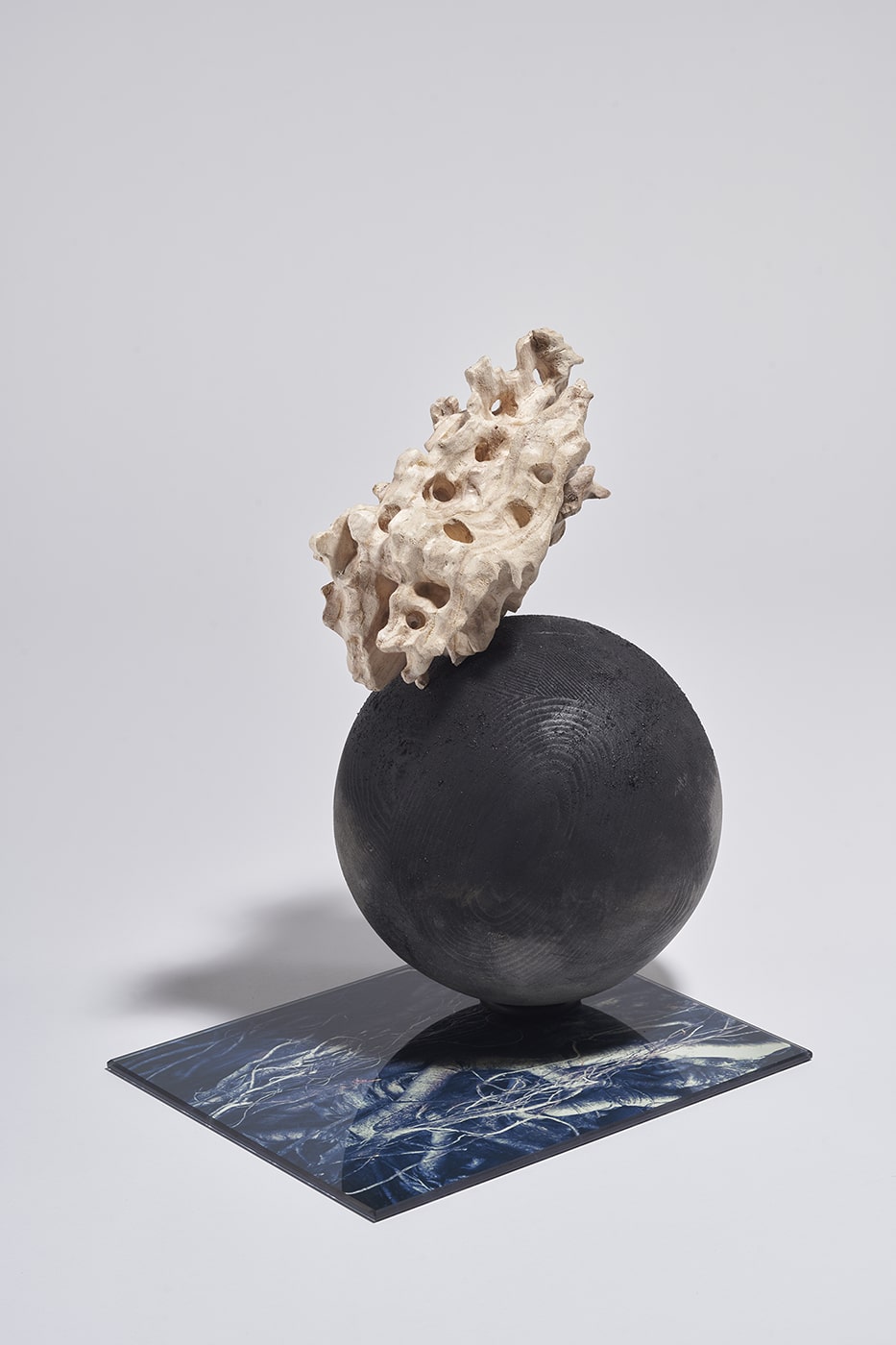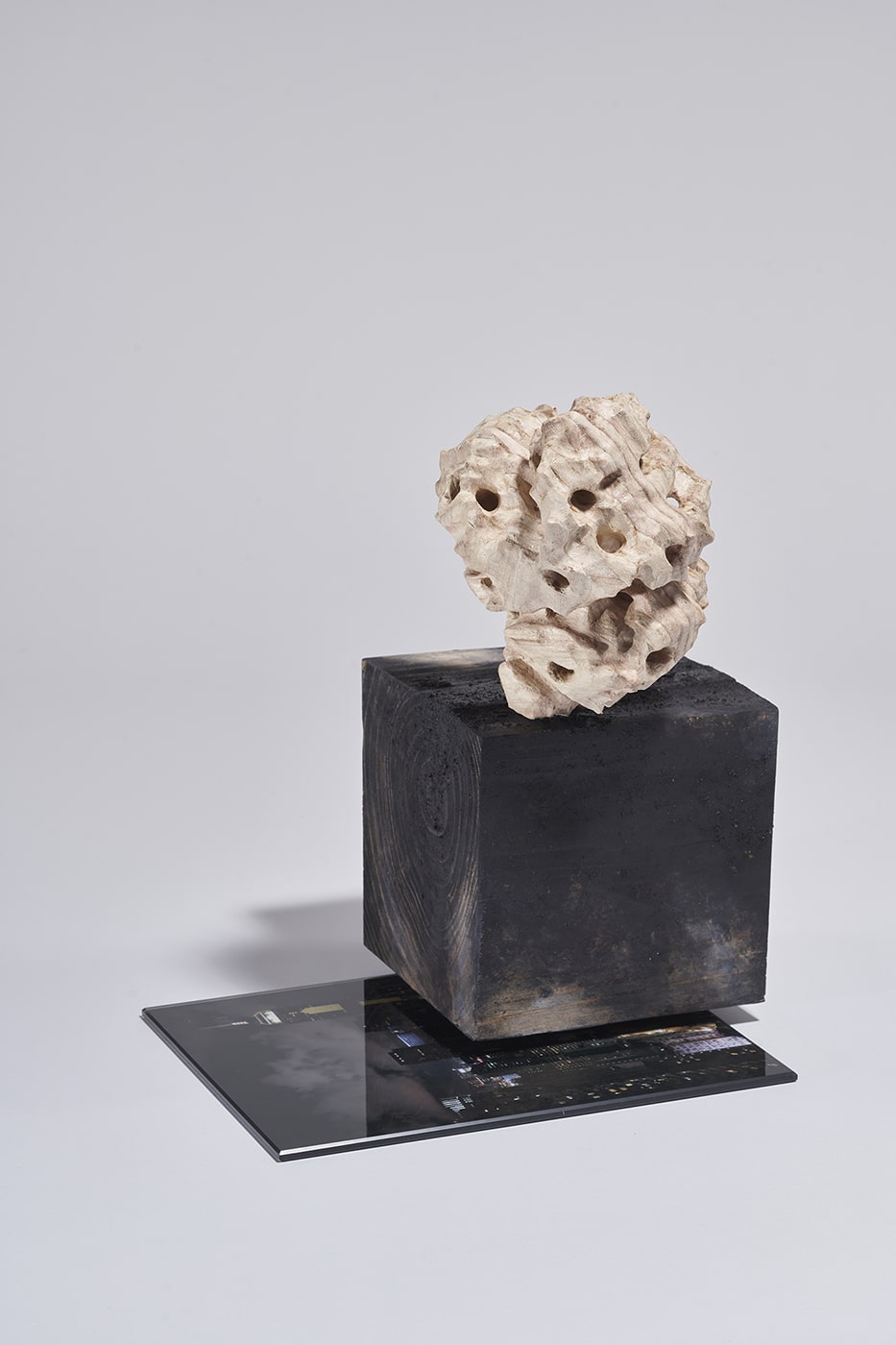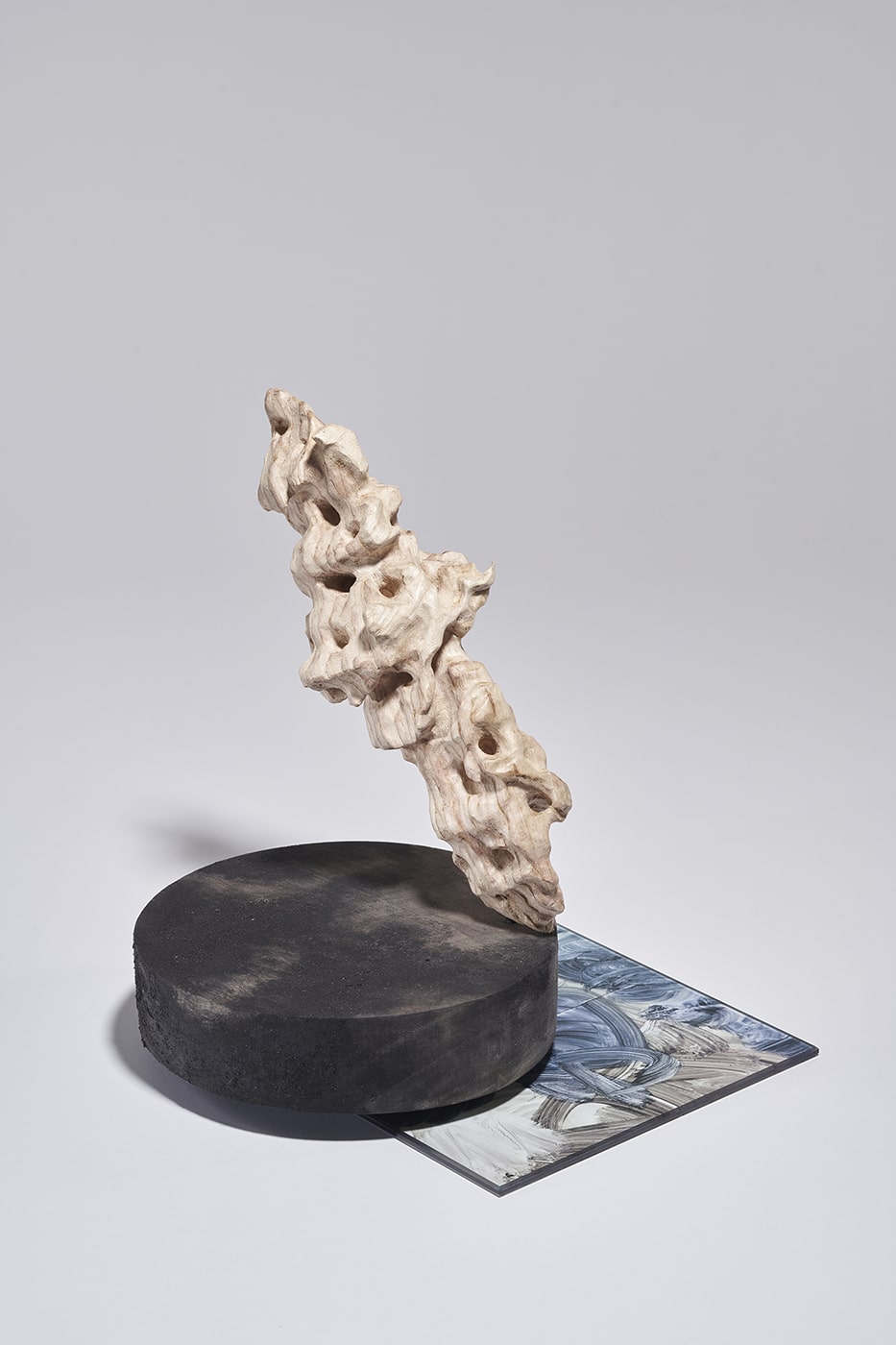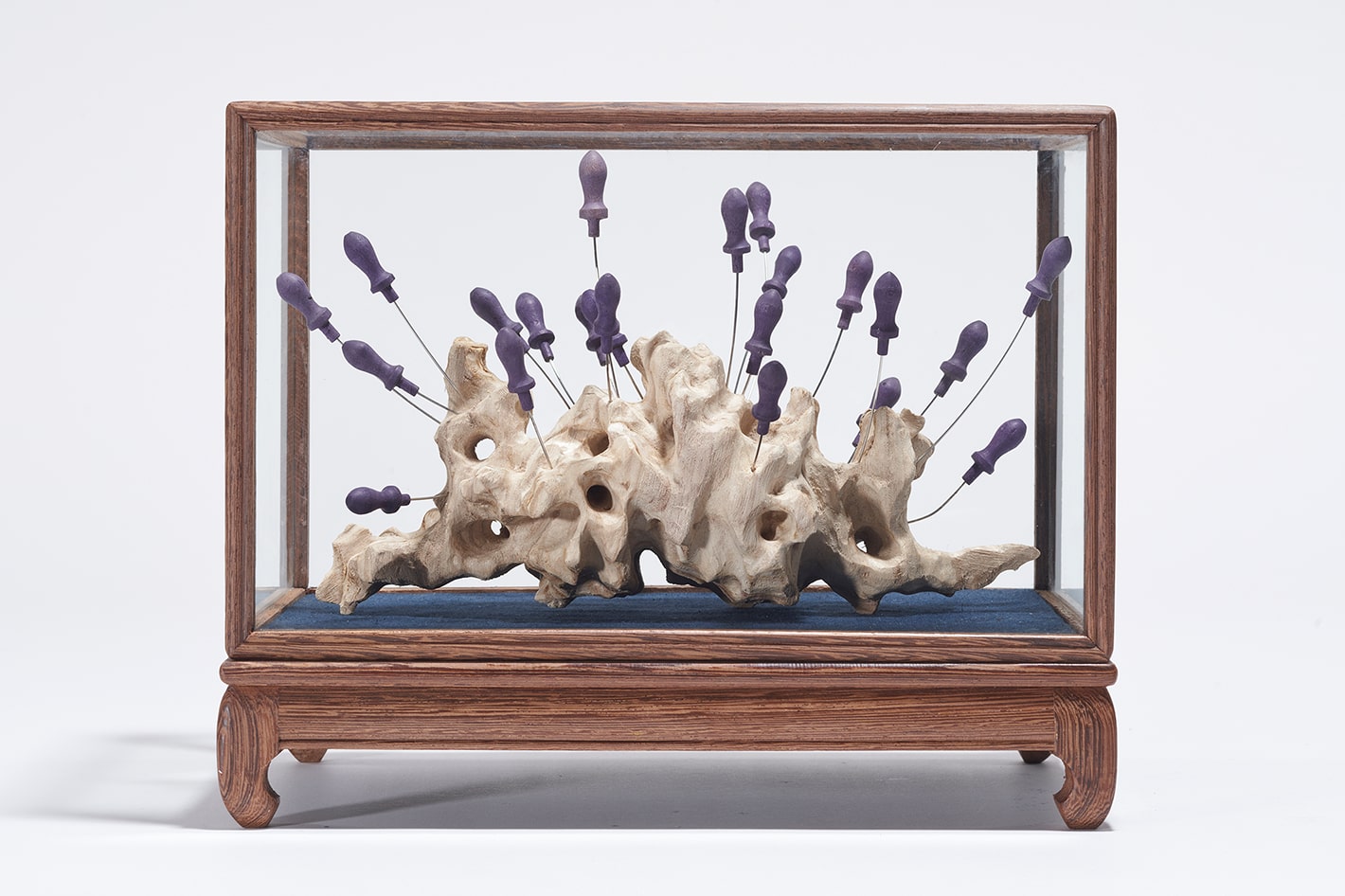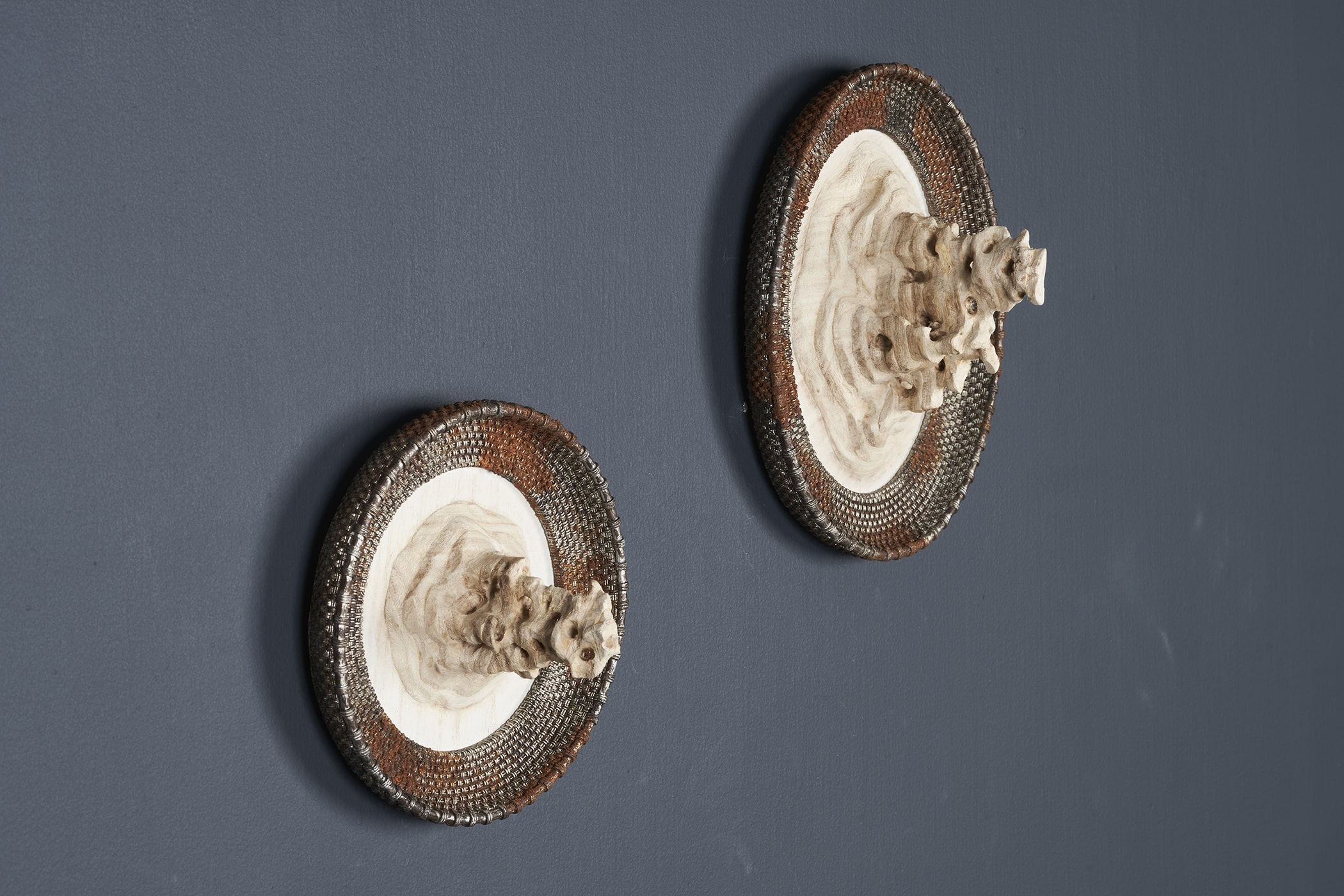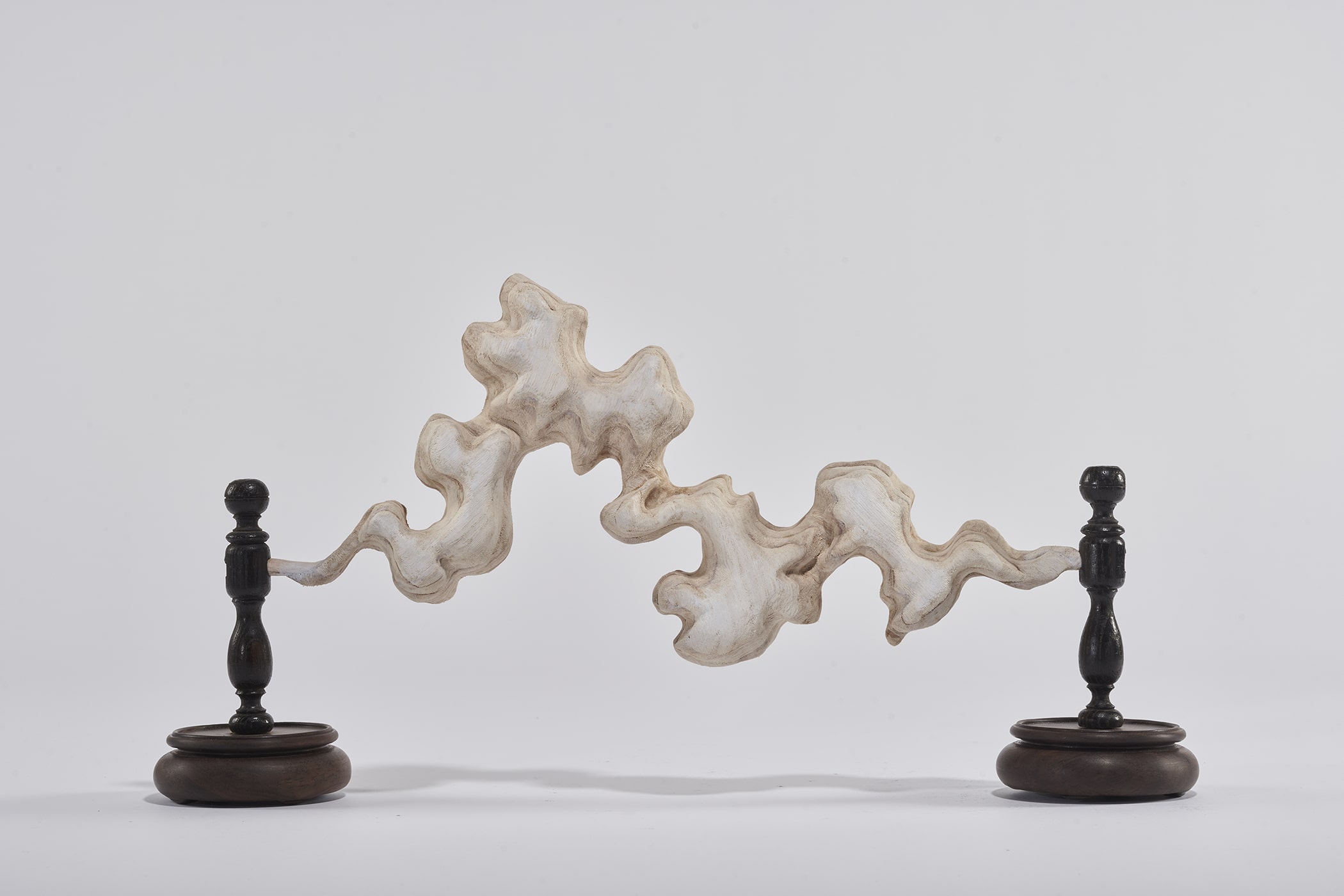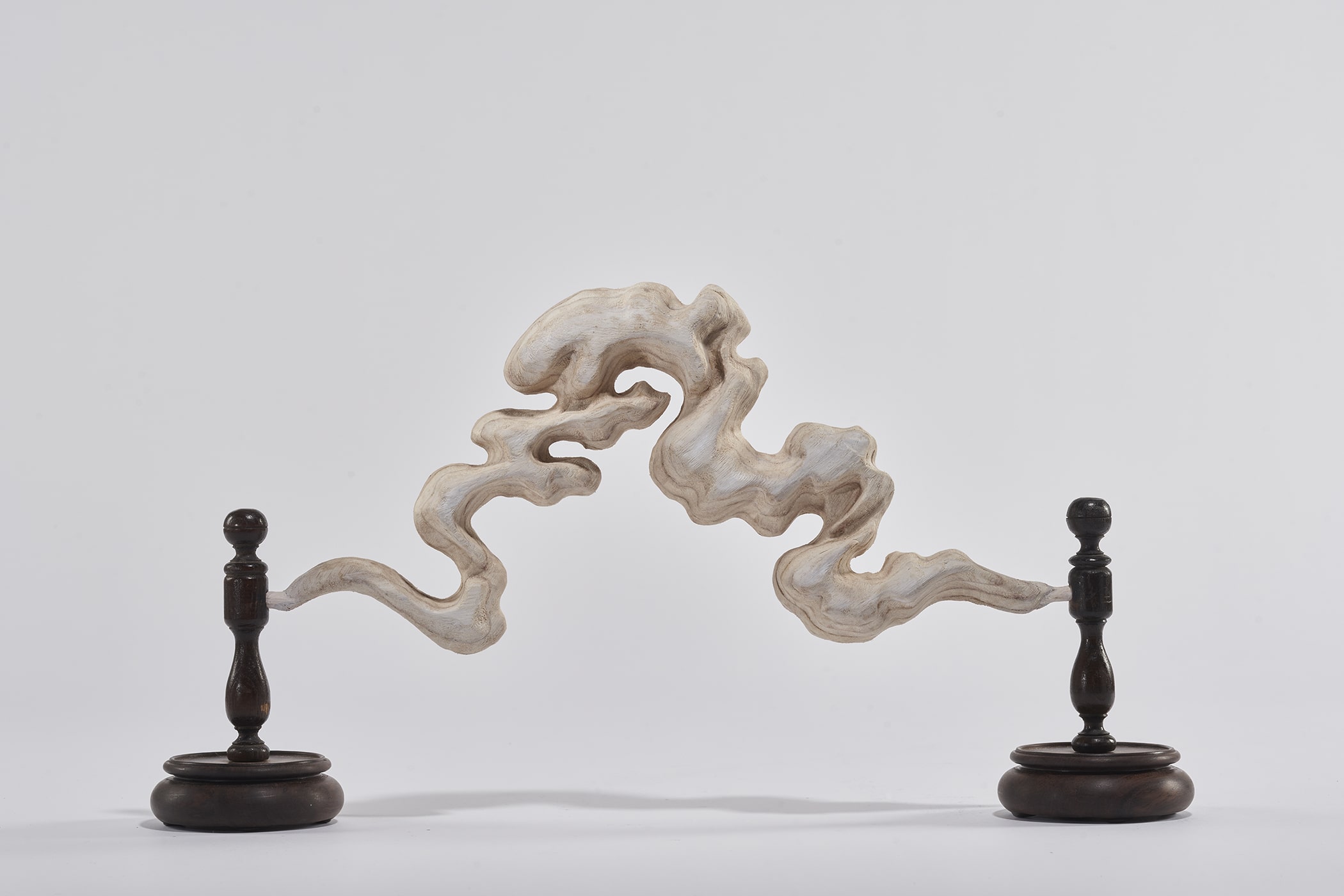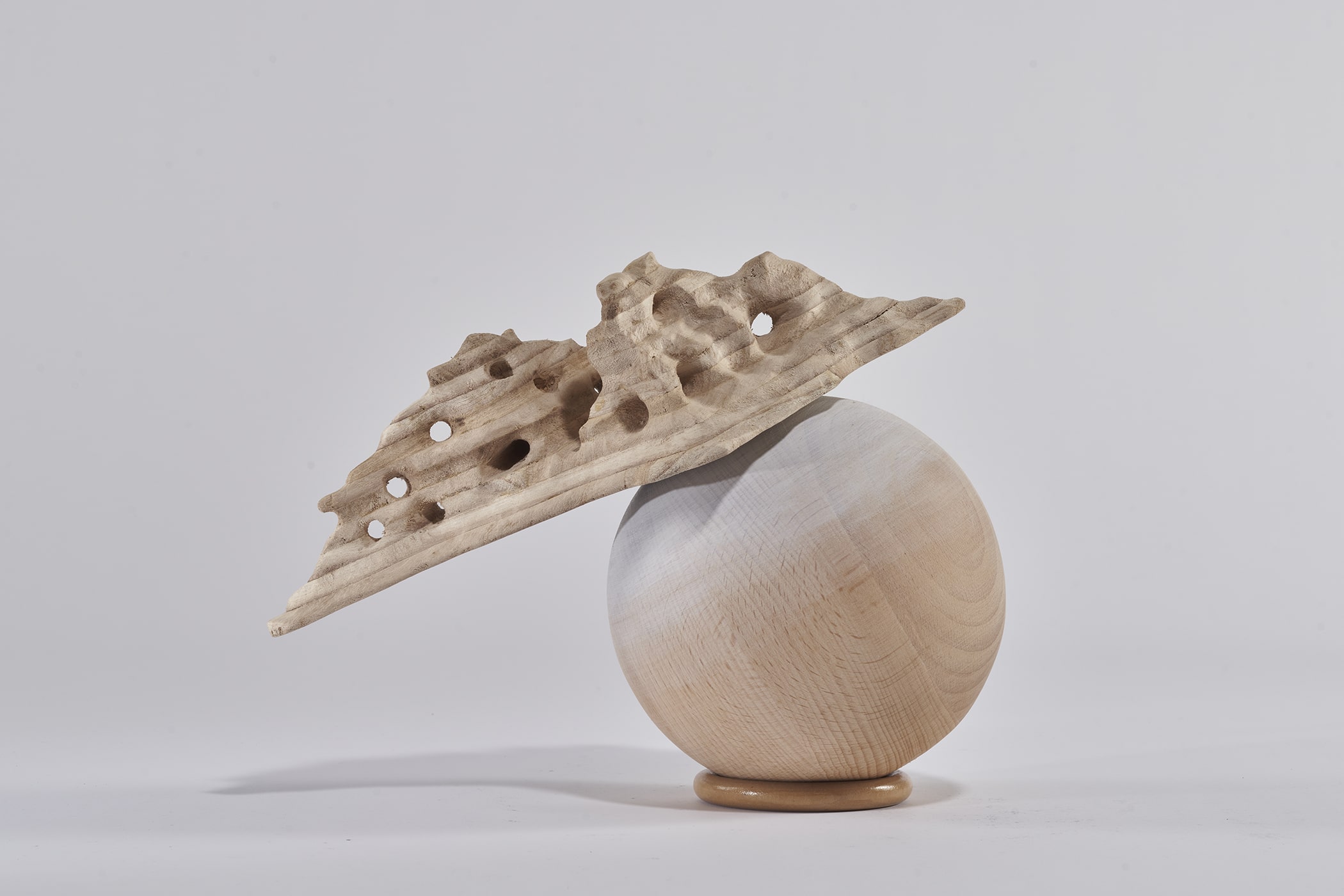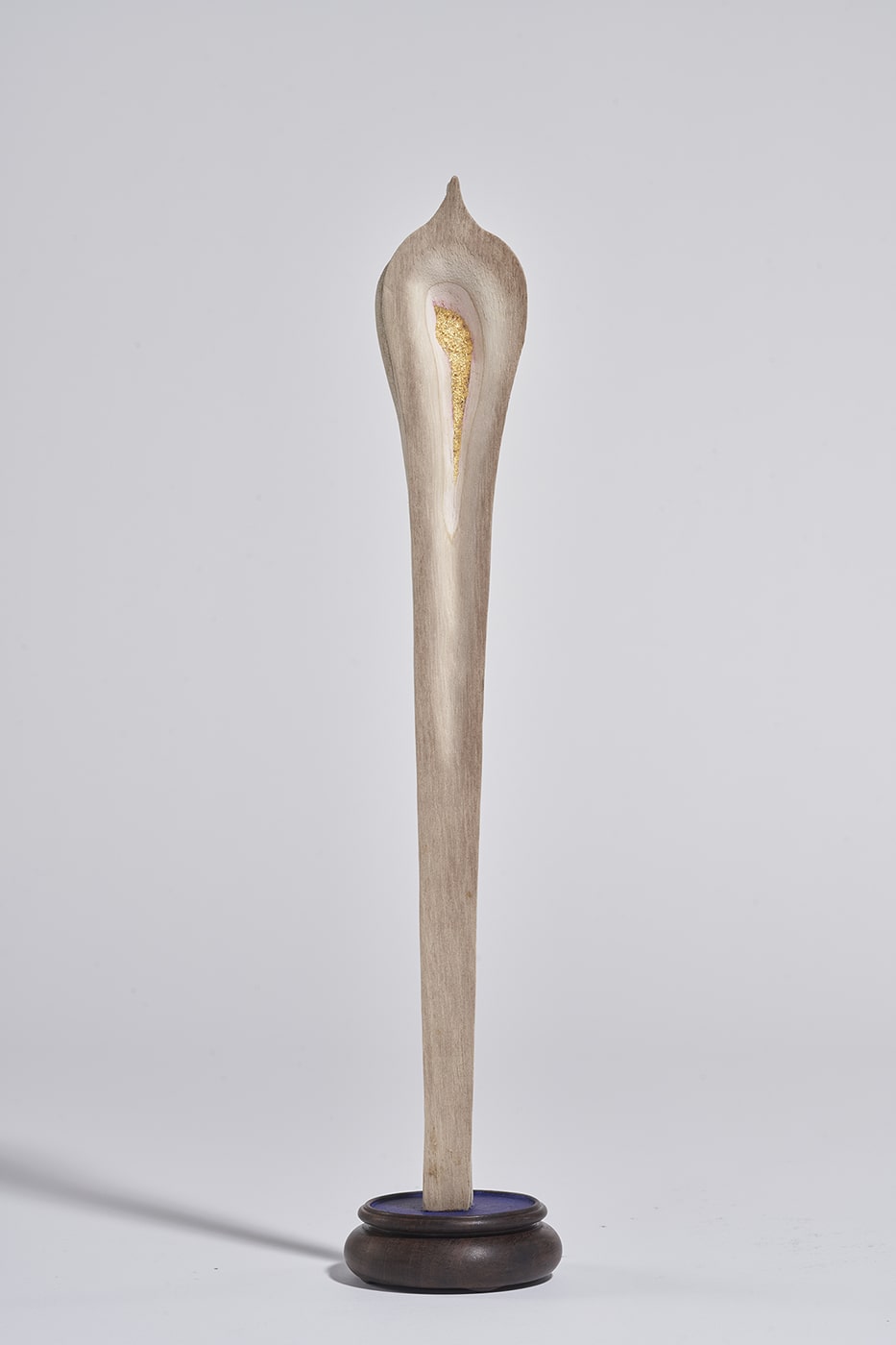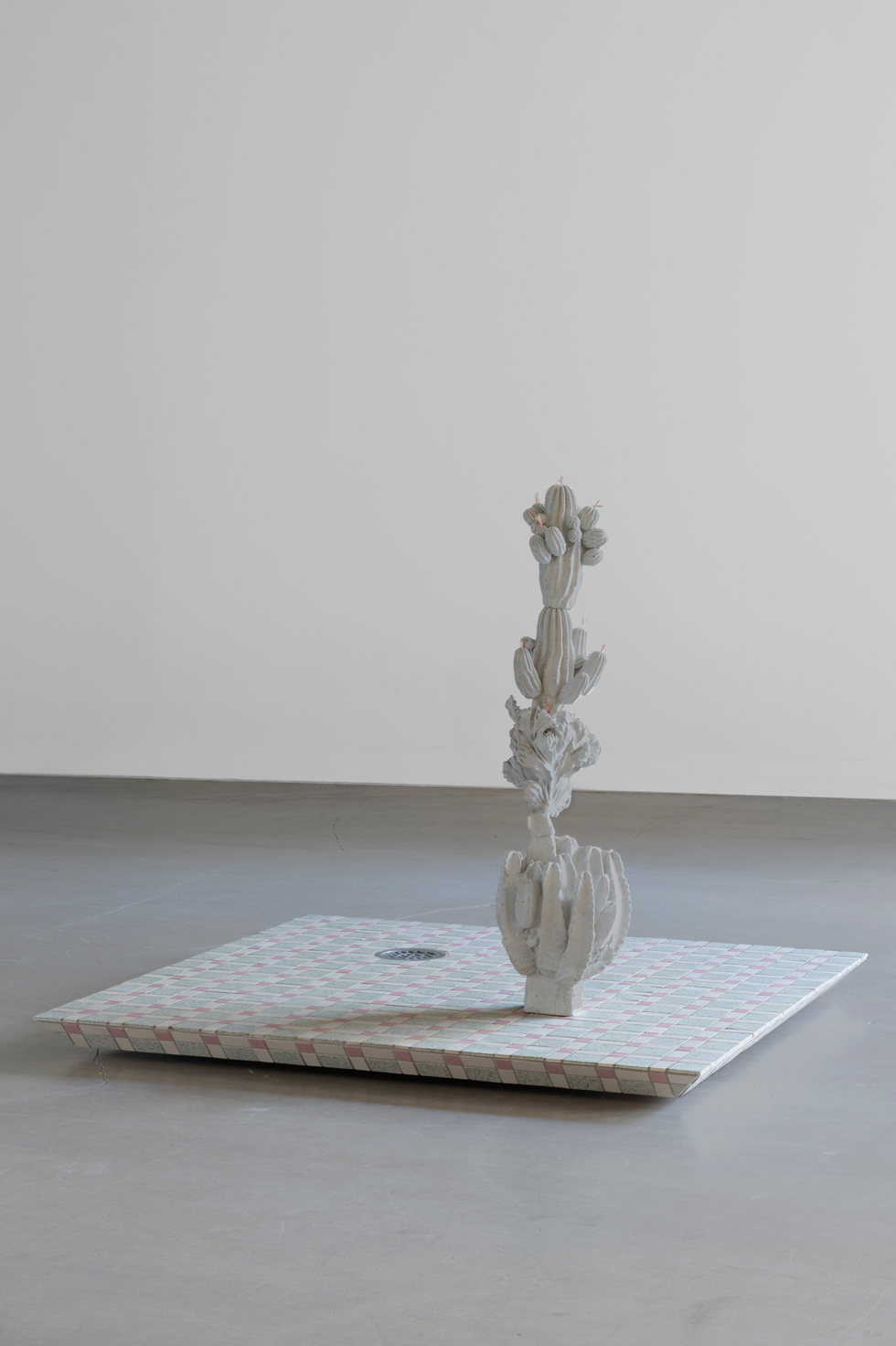Lau Hok Shing Hanison uses sculpture and installation in his practice. Passionate about classical Chinese culture and literature, Lau is an avid collector of antique objects and books, which he incorporates into his artistic practice in diverse ways. He combines hand-sculpted wooden forms with these objects, which opens up a new pathway for appreciation of classical culture and creates a conceptual thread that unites the old and the contemporary. He takes inspiration from myriad sources, be it traces left on antiques, forgotten verse by a Hong Kong poet, aria in a Cantonese opera, or iconic scene from Jin Yong’s wuxia novel. Lau’s practice manifests a naturalness in using Chinese elements, as well as his humanist concern for the society at large.
Solo exhibitions of Lau include “Bittersweet – A Mixed Media Solo Exhibition by Hanison, Lau Hok-Shing” (2011) at TEDA Contemporary Art Museum in Tianjin; and “Order – recordation of personal action by Hanison Lau” (2006) at Hong Kong Art Centre. Group exhibitions include “Charming Tastes and Fragrance: Literature and Visual Arts Exhibition” (2019) at the Hong Kong Arts Centre, Hong Kong; “Sparkle! Neo Travel: Creative and Cultural Docent @ Community” (2017) at Oi! Oil Street Art Space, Hong Kong; and “Islands’ Narrative: Literature X Visual Art” (2016) at 1a Space, Cattle Depot Artist Village, Hong Kong. In 2017, Lau received the Hong Kong Arts Development Awards – Award for Young Artist from the Hong Kong Arts Development Council.
Lau Hok Shing Hanison currently lives and works in Hong Kong.


